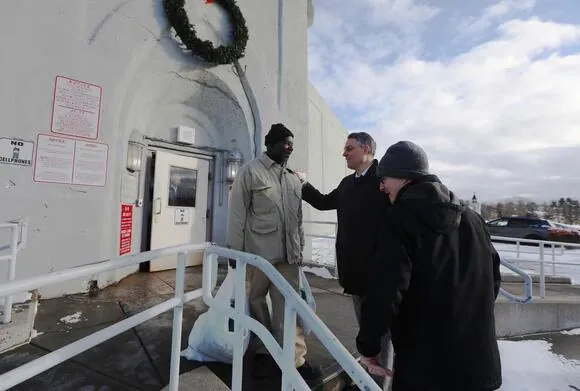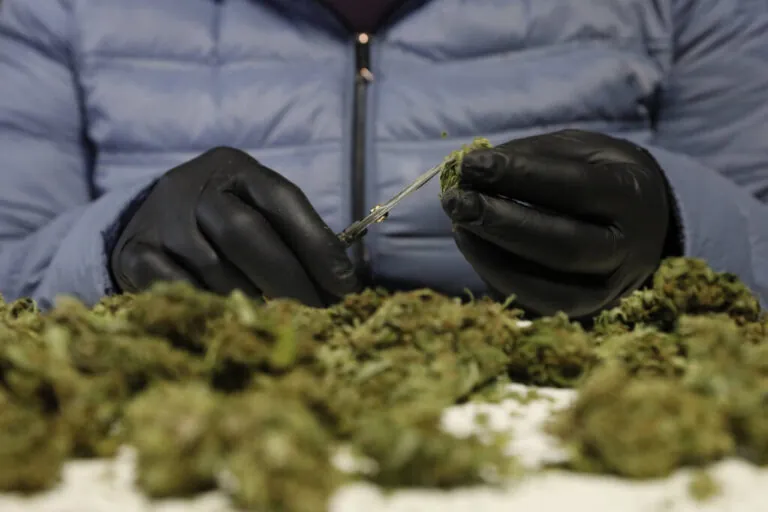Joe Biden’s $3 billion check to farmers: What happened, and where is it going in Texas?
The Biden administration made a significant investment in the country’s farmers this year.
In spring, the Biden administration initiated the distribution of $3.1 billion to numerous agriculture organizations, corporations, universities, and nonprofits for projects aimed at promoting climate-smart practices.
The money was supposed to be distributed by the organizations to the country’s farmers, ranchers, and foresters. This would benefit a wide range of growers, including those managing large-scale operations and underserved farmers, many of whom are new to the industry.
According to the U.S. Department of Agriculture (USDA), the 141 funded projects are expected to eliminate or sequester over 60 million metric tons of carbon dioxide emissions over a five-year period. This significant reduction is equivalent to removing more than 2.4 million gas-powered cars from the road. The USDA estimates that these projects will have a substantial impact on reducing carbon dioxide emissions.
The original intention involved compensating farmers for implementing practices aimed at reducing greenhouse gas emissions. These practices encompassed minimizing soil tilling, cultivating “cover crops” during non-harvest seasons, increasing tree plantations, and enhancing the efficient use of fertilizer and manure.
Did everything go according to plan at the end of the year?
In a thought-provoking interview with NPR’s Alisa Chang, independent journalist Amy Mayer delved into the background of the USDA’s policy.
Mayer asserts that the USDA has a well-documented track record of discrimination, particularly targeting Black farmers. Lawsuits were filed in the 1990s, and more recently, there was an unsuccessful attempt to provide debt relief to struggling farmers in a COVID package, which faced legal challenges.
Robert Bonnie, the undersecretary for farm production and conservation at USDA, acknowledged that addressing this issue has been a longstanding challenge for the department. He emphasized the importance of incorporating equity into all aspects of their work, including climate-related initiatives.
Mayer further elaborated on the purpose of the Climate-Smart funding program.
She clarified that the grants were specifically aimed at reaching out to women, military veterans, first-generation farmers, and ethnic minorities in the United States. During her visit, she had a meeting with Professor Ibrahim Katampe from Central State University. Professor Katampe’s college had been awarded a $5 million grant to provide support to underserved farmers in Ohio.
Katampe explained that the Climate-Smart program, facilitated by the CSU, has a specific focus on supporting minority-owned farm businesses in urban and high-poverty areas.
According to Katampe, these demographics appear to be the primary operating areas for small minority farmers.
Texas Tech University, a prominent institution for agriculture in Texas, is utilizing a generous $5 million funding to explore innovative methods that enable farmers to safeguard the environment while maintaining profitability. By implementing these strategies, farmers can enhance their competitiveness against large-scale farming operations and ensure a sustainable income for their farms.
Krishna Jagadish, the director of the project, revealed in an interview with Lubbock’s KCBD that the researchers will be exploring the benefits of no-till farming, multi-species cover crops, and the rotation of sorghum and cotton.
Jagadish is optimistic that this initiative will contribute to the eco-friendliness of Texas’ agriculture products.
Jagadish stated that the main objective is to create Climate-Smart commodities for the region.
Jagadish is currently studying the possibility of farmers reducing tillage in order to preserve soil health and allow more agricultural operations to be sustained.
Jagadish emphasized the potential risks of wind erosion, stating that there are significant chances of losing not only the soil but also the topsoil, which is crucial for crop growth.
Texas farmers face a significant challenge when it comes to water management. Jagadish, an aspiring researcher, is determined to explore strategies for optimizing water usage by finding the right balance in cover crop cultivation.
According to Jagadish, the goal is to manage cover crops in a manner that doesn’t harm the upcoming crop.
Researchers are conducting a study to explore the potential benefits of incorporating sorghum rotations into the farming practices of cotton growers. The aim is to reduce water usage and enhance soil health.
In 2022, when the USDA unveiled its plan, AgriLife at Texas A&M University made a commitment to spearhead Texas’ endeavors in becoming ‘climate-smart.’
In August, AgriLife secured a funding of $65 million. The project, led by research scientists Julie Howe, Ph.D. and Nithya Rajan, Ph.D., professors in the Department of Soil and Crop Sciences at the Texas A&M College of Agriculture and Life Sciences, focuses on soil chemistry and fertility as well as agronomy and agroecology.
In this project, our primary goal is to enhance resilience to climate change and mitigate its impacts by implementing climate-smart practices,” stated Howe in an interview with AgriLife Today.
Texas is a prime location for developing innovative solutions in agriculture and natural resources due to its diverse climates and soil. The state’s unique characteristics provide an ideal environment for creating scalable solutions that can be applied to other regions across the country. Additionally, Texas benefits from existing infrastructure that can be utilized to further enhance these advancements.
The TSSWCB, also known as the Texas State Soil and Water Conservation Board, takes the lead in developing climate-smart management plans and administering participant incentives. The University of Texas-Rio Grande Valley plays a crucial role in recruiting and demonstrating vegetable production, as well as translating all recruitment and educational materials into Spanish. To assess certain operations for potential carbon crediting, carbon market aggregators such as BCarbon and Nori are involved.
“We are thrilled about the potential of this project for commodity producers to assess climate-smart practices on their operations, enhancing sustainability and increasing carbon sequestration,” Howe expressed. “In the coming six months, as we initiate the project, we will share further details.”
The funds have finally been distributed to our colleges and universities, as well as allocated to 65 projects within the AgriLife Extension. This means that it is now planting season.
Next year, AgriLife and our colleges are looking forward to Texans experiencing a plentiful harvest while also contributing positively to the environment.
More News:
- Governor Abbott Arranges Transportation for 200 Migrants to a Sanctuary City in the Northeast
- Chris Christie resists pressure to withdraw from presidential race with significant ad campaign in New Hampshire







